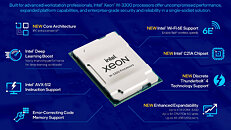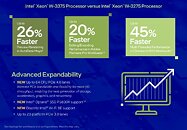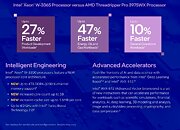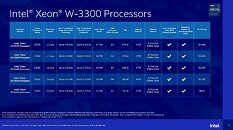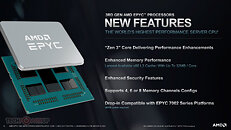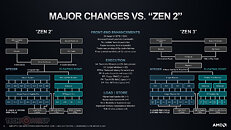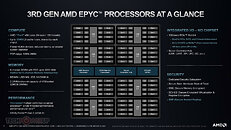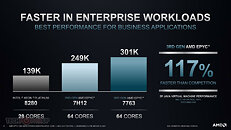V-COLOR Intros EXPO OC RDIMM Memory Octo-kits for AMD Threadripper 7000 WRX90 Workstations
V-COLOR today introduced a series of overclocking memory RDIMM kits for workstations powered by AMD Ryzen Threadripper 7000WX processors on the WRX90 platform that features 8-channel DDR5 memory. The kits include 8 RDIMMs, with densities ranging between 16 GB per RDIMM (128 GB per kit), to 96 GB per RDIMM (768 GB per kit); and comes in speeds ranging between DDR5-5600 and DDR5-7200. The best part? These modules feature AMD EXPO profiles, which should make enabling their advertised speeds as easy as a couple of clicks in the motherboard's UEFI setup program.
An EXPO profile not just applies the kit's memory speed, timings, and voltages, but also several sub-timings and settings that are specific to the AMD platform, which are not found on Intel. V-COLOR has tested its overclocking RDIMMs on popular AMD WRX90 chipset motherboards, namely the ASRock WRX90 WS EVO, ASUS PRO WS WRX90E-SAGE SE, and certain unreleased WRX90 workstation motherboards by Supermicro. Although the RDIMMs lack heatspreaders for the DRAM chips, V-COLOR is including what it calls "micro heatsinks" for the PMIC and RCDs. The RCD in particular is crucial to get Threadrippers to operate at speeds such as DDR5-7200. The kits should be available starting today, with all models available from mid-March. The company didn't reveal pricing.
An EXPO profile not just applies the kit's memory speed, timings, and voltages, but also several sub-timings and settings that are specific to the AMD platform, which are not found on Intel. V-COLOR has tested its overclocking RDIMMs on popular AMD WRX90 chipset motherboards, namely the ASRock WRX90 WS EVO, ASUS PRO WS WRX90E-SAGE SE, and certain unreleased WRX90 workstation motherboards by Supermicro. Although the RDIMMs lack heatspreaders for the DRAM chips, V-COLOR is including what it calls "micro heatsinks" for the PMIC and RCDs. The RCD in particular is crucial to get Threadrippers to operate at speeds such as DDR5-7200. The kits should be available starting today, with all models available from mid-March. The company didn't reveal pricing.



































































